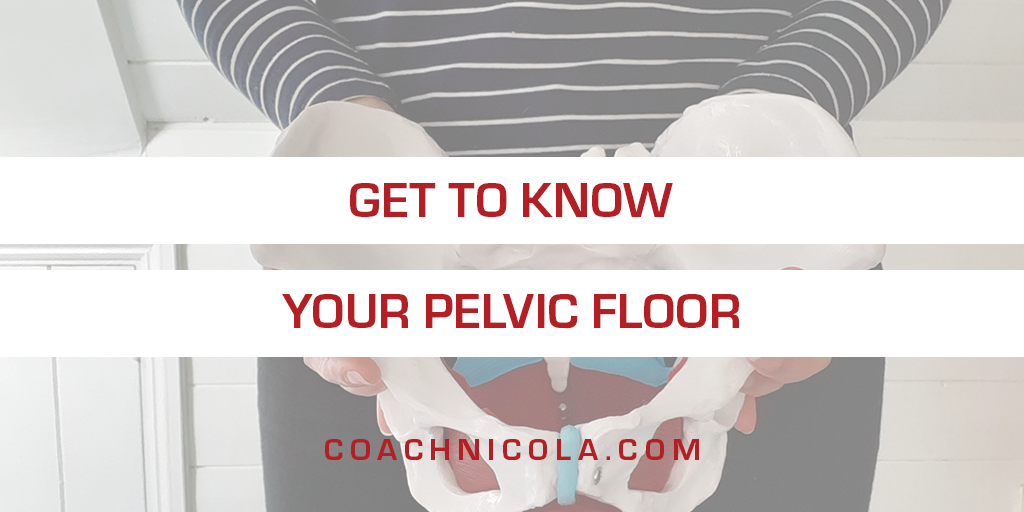
Get to know your pelvic floor

Need to know more about your pelvic floor? Perhaps you have been told you need to do your pelvic floor exercises but aren’t sure why? Or you experience leaking and have been told it’s to do with your pelvic floor.
Here’s my easy to understand guide to help you to get to know your pelvic floor.
What are your pelvic floor muscles and what do they do?

Your pelvic floor is made up from a layer of three muscles that are attached to the pelvic bones, sacrum and coccyx. They form part of the base of your “core”, along with the diaphragm, abdominal and back muscles.
Your pelvic floor muscles have important functions in the body. They
- support your organs like your uterus and bladder
- act as a stabiliser, especially for the lower back and pelvic girdle
- provide sphincteric opening and closing
- act as a sump pump for the body
- have a sexual function, and play a role in female orgasms
What is pelvic floor dysfunction?
You don’t usually think of your pelvic floor until something goes wrong.
Fully functioning pelvic floors should be able to contract and relax both voluntary and involuntary, so you should be able to control them when needed but they should also work involuntarily to prevent us from leaking urine or feces.
Pelvic floor dysfunctions are common, especially after being pregnant and having children. Often this can be leaking when sneezing, coughing or laughing, but it can also be having difficulty starting urination.
And it doesn’t just affect women who have children. It can start in menopause due to changes in the connective tissues, sometimes it’s through lifestyle and stress, or even the activities you take part in.
But it’s not just about leaking. If you have been pregnant and have a diastasis recti this can also affect the pelvic floor due to the interactions with the pelvis. And, as the pelvic floor connects with the lower back, some back pain can be caused by pelvic floor dysfunction.
Pelvic Floor exercises – when to do them and why
Like any other muscle in the body you can exercise your pelvic floor to help keep it strong. If you’ve been pregnant or experienced leaking then someone has probably told you to do your pelvic floor exercises.
But what are they?
At its simplest this is by doing a Kegel or “squeeze and lift”. These can be done at any time, you don’t need special clothes and you can do them sitting down, standing up or even lying on the floor. Start with a simple slow lift and squeeze repeated 10 times, followed by 10 quick lifts.
However, as the pelvic floor is part of the core, then exercises are even more effective if you add movement and co-ordination with your breath.
It’s not all about getting strong
However, for some women having a weak pelvic floor isn’t the problem. Rather the pelvic floor is too strong and can’t relax. Remember when I said sometimes the issue is not being able to start urination? That’s because the pelvic floor isn’t relaxing.
Women who are very active in sports such as gymnastics, horseriding or dance often have an over strong pelvic floor (also called hypertonic), but it can also affect women who experience a lot of stress (and who hasn’t over the last few years?)
So we need to relax it.
How do with do this? By using our breath, allowing our whole body to truly relax, using mobilisations and releases.
A Holistic Approach
What is really needed is a holistic approach, which is why I love coaching the Holistic Core Restore® Everywoman programme.
Rather than just seeing the pelvic floor in isolation from the rest of the body you need to look at how you breathe, how you stand, how much stress you have, whether you are nourishing your body through good food, and if you ever, truly, relax.
All of this is covered in the Everywoman programme and is why it is so effective.
If you want to learn more about how the Everywoman programme can help you, then do get in touch. I’d love to chat.

Leave a Comment
(0 Comments)